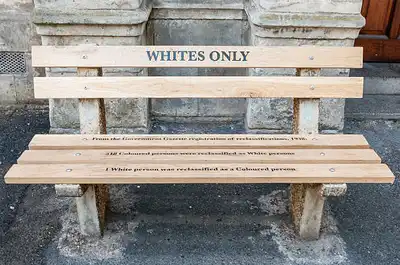How Was Apartheid Practiced In South Africa?

In the Afrikaans language, apartheid is known as apartness. This was a legal framework that supported segregationist practices toward South Africans of color. The all-white National Party government in South Africa immediately started enforcing the country’s pre-existing laws of racial segregation after taking office in 1948. The majority of South Africans who are not white were required to live in segregated neighborhoods and use segregated public amenities under apartheid. Even though the laws that supported apartheid were abolished by the early 1990s, the negative social and economic effects of the racist practice continued into the twenty-first century.
Who Was the Initiator of Apartheid in South Africa?
Long before apartheid, racial segregation and white supremacy had become major tenets of South African policy. Three years after South Africa gained its independence, the contentious 1913 Land Act was passed, ushering in the era of territorial segregation by requiring black Africans to live in reserves and outlawing their employment as sharecroppers. The South African National Native Congress, which would later become the African National Congress, was founded by opponents of the Land Act (ANC).
Effects Of The Apartheid Regime
Segregation by race
It created residential and commercial districts in urban areas for each race, and people of other races were forbidden from residing there, running businesses there, or owning property there. As a result, thousands of Coloreds, Blacks, and Indians were forced to leave districts designated for white occupation. For non-Whites, different educational standards were established. Black children were required to attend state-run schools that were established under the Bantu Education Act of 1953 in order to prepare them for manual labor and other low-paying jobs that the government deemed appropriate for people of their race.
- Who is The Richest Woman in South Africa?
- Is Polyandry Legal In South Africa?
- Does YouTube Pay in South Africa?
- Which University Is The Best In South Africa?
- What to Do After Registering Your Company In South Africa
- How to Find A Missing Person in South Africa
- What Is the Retirement Age in South Africa?
- How to Sell Old Coins For Cash in South Africa.
- What Are The Requirements For (PDP) in South Africa?
- Where Can I Study Real Estate in South Africa?
Separate Development and Apartheid
When Hendrik Verwoerd took office as prime minister in 1958, he further developed apartheid policy into a framework he called “separate development.” Ten Bantustans, or homelands for the Bantu people, were established by the Promotion of Bantu Self-Government Act of 1959. By keeping black South Africans apart, the government was able to assert that there was no black majority and lessened the likelihood that blacks would band together to form a single nationalist organization. Every black South African was given citizenship status within a Bantustan, which was meant to grant them full political rights but in reality excluded them from the country’s political system.
How long did apartheid last?
Apartheid in South Africa was opposed over time in a variety of ways, including political action, peaceful protests, strikes, and demonstrations, as well as ultimately armed resistance. The South Indian National Congress and the ANC organized a sizable gathering in 1952, where attendees lit fireworks. The majority of the laws that served as the foundation for apartheid started to be repealed by the administration of President F.W. de Klerk in 1991. As a result of their work drafting a new constitution for South Africa, President de Klerk and activist Nelson Mandela would later be awarded the Nobel Peace Prize.
In the Apartheid regime, black neighborhoods were off-limits to them white people; only those who had a permit were allowed to work in white areas. All non-White people were considered inferior and denied the right to vote.
Share This





